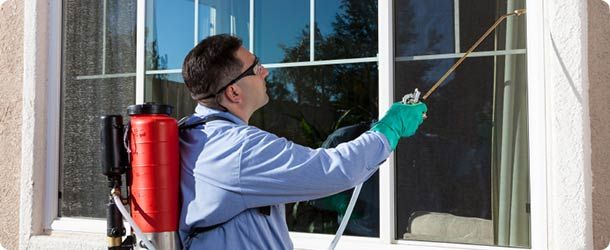Introduction
Pest control and bed bug treatment are crucial for maintaining a clean and healthy living environment. Whether dealing with common household pests or battling a severe bed bug infestation, understanding the proper methods for eliminating these threats is essential. This comprehensive guide will cover the most effective pest control strategies and bed bug treatment solutions, helping you safeguard your home and ensure peace of mind.
Understanding Pest Control
Pest control is the process of managing or eliminating pests that pose a threat to health, safety, and property. Pests can range from insects like ants, termites, and cockroaches to rodents such as mice and rats. When left unchecked, these pests can cause significant damage and spread diseases.
Common Household Pests
Various pests can invade your home, each requiring different methods of control. Some of the most common include:
- Ants: Known for their ability to invade kitchens and pantries, ants can contaminate food and become a persistent nuisance.
- Cockroaches: These pests are notorious for spreading bacteria and allergens, making them a health hazard in any home.
- Termites: Termites can cause significant structural damage by feeding on wood, often going unnoticed until the damage is severe.
- Rodents: Mice and rats are destructive to property and carry diseases that can affect humans and pets.
Importance of Pest Control
Implementing effective pest control measures is essential for several reasons:
- Health Protection: Pests like cockroaches, mosquitoes, and rodents can transmit diseases such as salmonella, Lyme disease, and dengue fever.
- Prevent Property Damage: Termites, rodents, and other pests can cause extensive damage to your home, resulting in costly repairs.
- Peace of Mind: By maintaining a pest-free environment, you can enjoy your home without the worry of infestations or the health risks they pose.
Pest Control Methods
There are several methods for controlling pests, each suited to different types of infestations and environments. Below are some commonly used approaches:
Chemical Pest Control
Chemical pest control involves the use of pesticides and insecticides to eliminate pests. This method is often quick and effective, but it’s important to use these chemicals safely to avoid harming humans, pets, and the environment.
Biological Pest Control
Biological pest control uses natural predators or parasites to control pest populations. For example, introducing ladybugs to a garden can help control aphid populations. This method is environmentally friendly and avoids the use of harmful chemicals.
Mechanical Pest Control
Mechanical pest control involves physical methods such as traps, barriers, and repellents to keep pests at bay. Mouse traps, sticky traps for insects, and door screens are common examples of mechanical control methods.
Integrated Pest Management (IPM)
IPM is a comprehensive approach that combines various pest control methods to create an effective, long-term solution. It involves monitoring pest activity, using targeted treatments, and minimizing the use of harmful chemicals.
Bed Bug Treatment: The Ultimate Challenge
What Are Bed Bugs?
Bed bugs are small, reddish-brown insects that feed on the blood of humans and animals. They are notorious for hiding in mattresses, and furniture, and cracks in walls, making them difficult to detect. Bed bug infestations are often challenging to eliminate, as these pests reproduce rapidly and are resistant to many treatments.
Signs of a Bed Bug Infestation
Identifying a bed bug infestation early is crucial for successful treatment. Common signs of bed bugs include:
- Bite Marks: Bed bug bites typically appear as small, red, itchy bumps, often in clusters or a line on exposed skin.
- Blood Stains: You may notice small blood stains on your sheets or pillowcases, caused by crushed bed bugs.
- Fecal Spots: Bed bugs leave behind tiny black or brown fecal spots on mattresses, furniture, and walls.
- Shed Skins: As bed bugs grow, they shed their exoskeletons, which may be found near their hiding places.
Effective Bed Bug Treatment Methods
Treating bed bugs requires a combination of methods to ensure complete eradication. Here are some of the most effective approaches:
Chemical Treatments
Chemical treatments are one of the most common methods for eliminating bed bugs. Pesticides specifically designed for bed bugs can be applied to infested areas. However, multiple treatments are often necessary to ensure all bed bugs and their eggs are killed.
Heat Treatment
Heat treatment involves raising the temperature of an infested area to a level that is lethal to bed bugs. This method is highly effective, as it can penetrate deep into mattresses, furniture, and walls where bed bugs hide. Professional pest control services often use heat treatments to eradicate severe infestations.
Vacuuming and Steam Cleaning
Vacuuming can help remove bed bugs and their eggs from surfaces, while steam cleaning can kill bed bugs hiding in hard-to-reach places. These methods are particularly useful for treating mattresses, furniture, and carpets.
Mattress Encasements
Mattress encasements are specially designed covers that trap bed bugs inside, preventing them from feeding and eventually killing them. Using encasements on mattresses and box springs can help control bed bug populations and prevent future infestations.
Preventative Measures
Once you’ve treated a bed bug infestation, it’s important to take preventative measures to avoid future problems. Some key steps include:
- Regular Inspections: Periodically inspect your home for signs of bed bugs, especially after traveling or purchasing second-hand furniture.
- Sealing Cracks and Crevices: Bed bugs can hide in small cracks and crevices, so sealing these areas can help prevent infestations.
- Laundering Bedding: Frequently wash and dry bedding on high heat to kill any bed bugs or eggs that may be present.
Preventing Pests in the Home
Maintain Cleanliness
Keeping your home clean and clutter-free is one of the most effective ways to prevent pest infestations. Pests are attracted to food scraps, garbage, and hidden nesting areas. Regular cleaning and proper waste disposal can help deter pests from entering your home.
Seal Entry Points
Pests can enter your home through even the smallest openings. Sealing cracks, gaps, and holes in walls, windows, and doors can prevent pests like rodents, ants, and cockroaches from getting inside.
Use Natural Repellents
Natural repellents, such as essential oils, garlic, and diatomaceous earth, can help keep pests away without the use of harsh chemicals. For instance, peppermint oil is known to repel ants and spiders, while diatomaceous earth can be used to control insects like bed bugs and fleas.
FAQs on Pest Control and Bed Bug Treatment
1. How often should I perform pest control in my home?
It depends on the severity of the infestation and the type of pests. For general pest prevention, performing pest control every three to six months is recommended.
2. Can I treat a bed bug infestation on my own?
While DIY treatments can help reduce bed bug populations, professional treatment is often necessary for complete eradication.
3. Are chemical pest control methods safe for pets?
Some chemical pest control methods can be harmful to pets. Always choose pet-safe treatments or consult a professional pest control service for advice.
4. What is the best way to prevent bed bug infestations?
Regular inspections, maintaining cleanliness, and sealing potential hiding spots are the best ways to prevent bed bug infestations.
5. Can natural remedies effectively control pests?
Natural remedies, such as essential oils and diatomaceous earth, can be effective in controlling minor infestations. However, severe infestations may require stronger treatments.
Conclusion
Pest control and bed bug treatment are critical to maintaining a healthy, comfortable home. By understanding the different methods of pest control and utilizing effective bed bug treatment strategies, you can protect your home from these common threats. Always consider professional assistance for severe infestations, and be proactive in preventing future issues with proper cleaning and maintenance.



